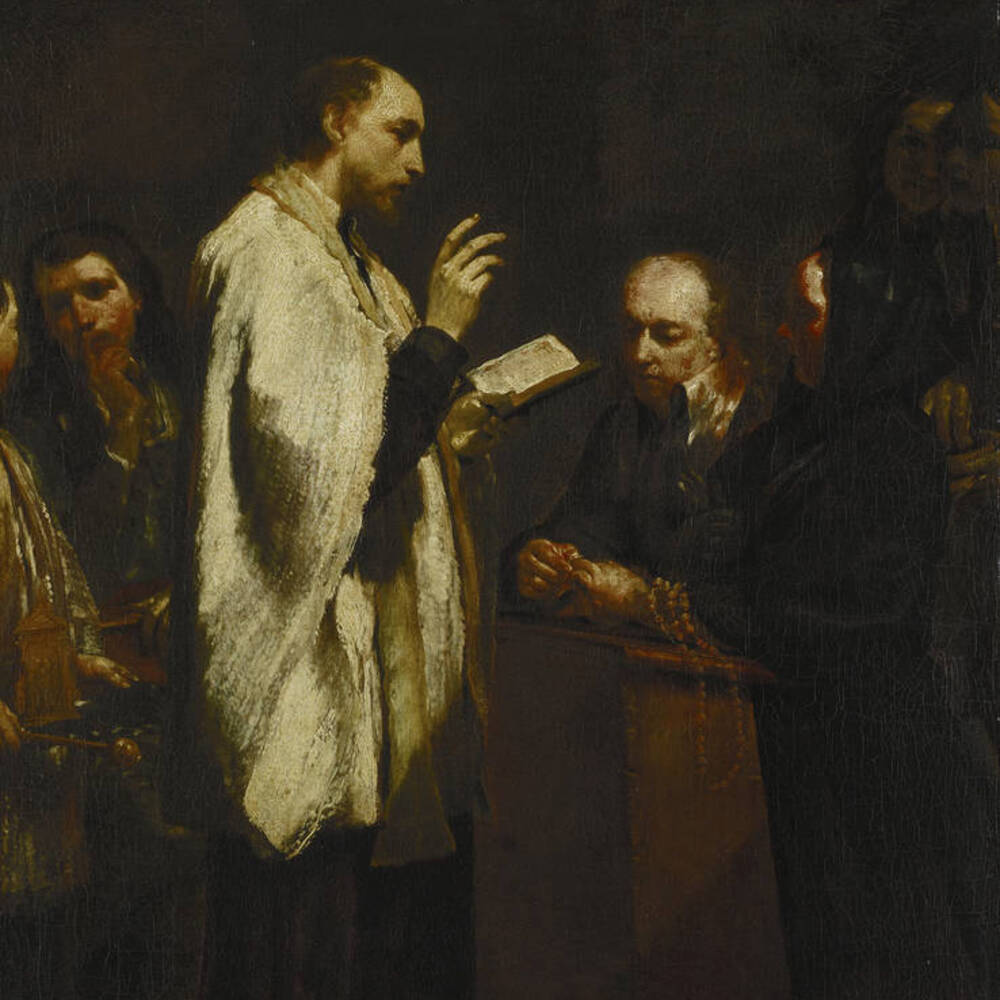As if under a spotlight, the priest and the kneeling couple stand out against the darkness. The marriage ceremony is being performed by the priest and the groom is just placing the ring on his bride’s finger. Typical of this artist is the narrative expansion of the scene through additional figures. On the left, an acolyte asks for quiet, while two witnesses stand on the right. As early as 1739, a writer noticed that they are taking snuff from a snuff box, thus calling the ceremony into question.
Further Media
Giuseppe Maria Crespi is said to been inspired to paint his Seven Sacraments series during a morning visit to the San Benedetto Church in Bologna. In the church, he was fascinated to see how a bright ray of sunlight falling onto the confessional highlighted the figures of the priest and person taking confession. That moment – literally – of illumination gave Crespi the idea for a painting of the Sacrament of confession, as well as the other six Sacraments of the Catholic Church. His idea was also supported by the Cardinal Pietro Ottoboni, who commissioned the works. Crespi then produced a total of seven paintings, all with the same strong visual contrasts between light and shade.
Catholicism teaches that the Sacraments comprises seven holy rites conducted by a priest. The rites are a visible sign of the grace of God. At the same time, since they are performed in front of witnesses, they also strengthen the individual’s faith in God. The first Sacrament is baptism, the rite of admission into the Church. The second rite of initiation into the Church is confirmation, a profession of faith. In the Sacrament of the Eucharist, the core of the Catholic mass, the faithful enter into a mystical union with God by receiving the bread and wine, the body and blood of Christ. In the Sacrament of Penance, through a person’s contrition and confession, a priest can grant absolution for that person’s sins. The priest also administers the Last Rites for someone dying. Crepsi’s last two paintings in his Sacraments series show the Sacrament of Holy Orders, when a person is empowered to act in the name of Christ and the Church, and the Sacrament of Marriage, where a couple commit to a life together nurtured by prayer and faith, and acknowledge the indissolubility of the marriage bond.
- Location & Dating
- c. 1712
- Material & Technique
- Oil on canvas
- Dimenions
- 127 x 93,5 cm
- Museum
- Gemäldegalerie Alte Meister
- Inventory number
- Gal.-Nr. 392

